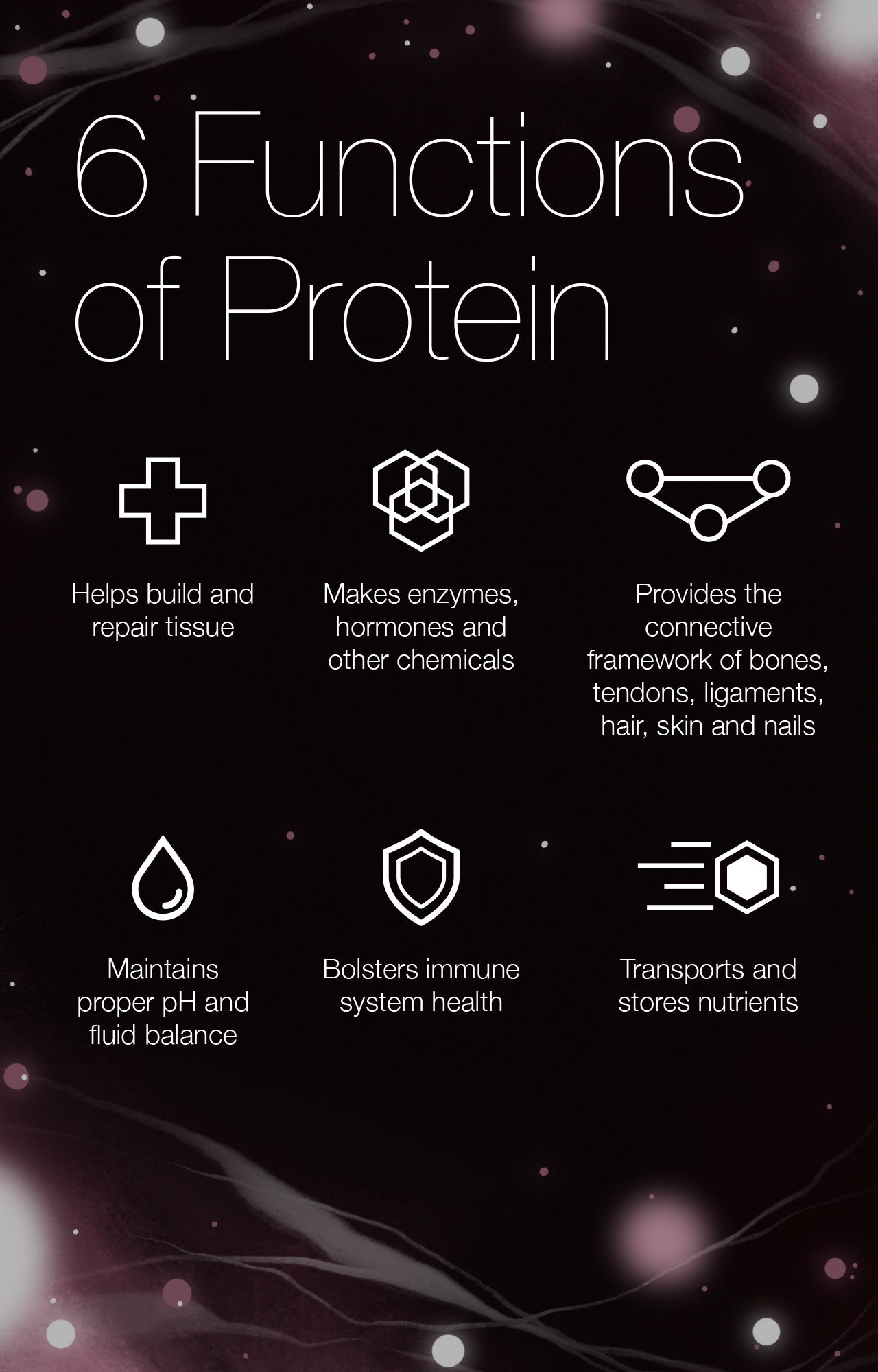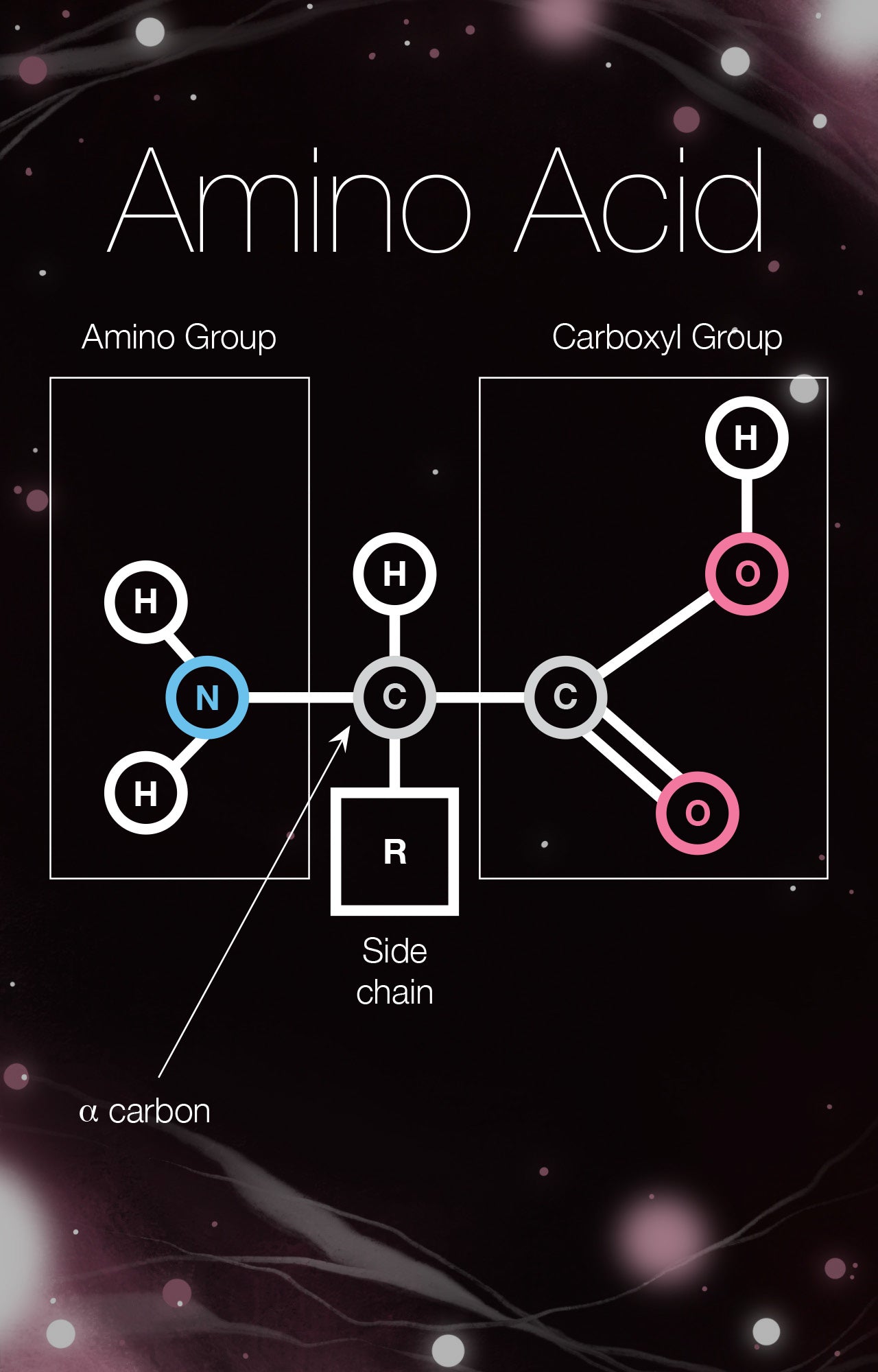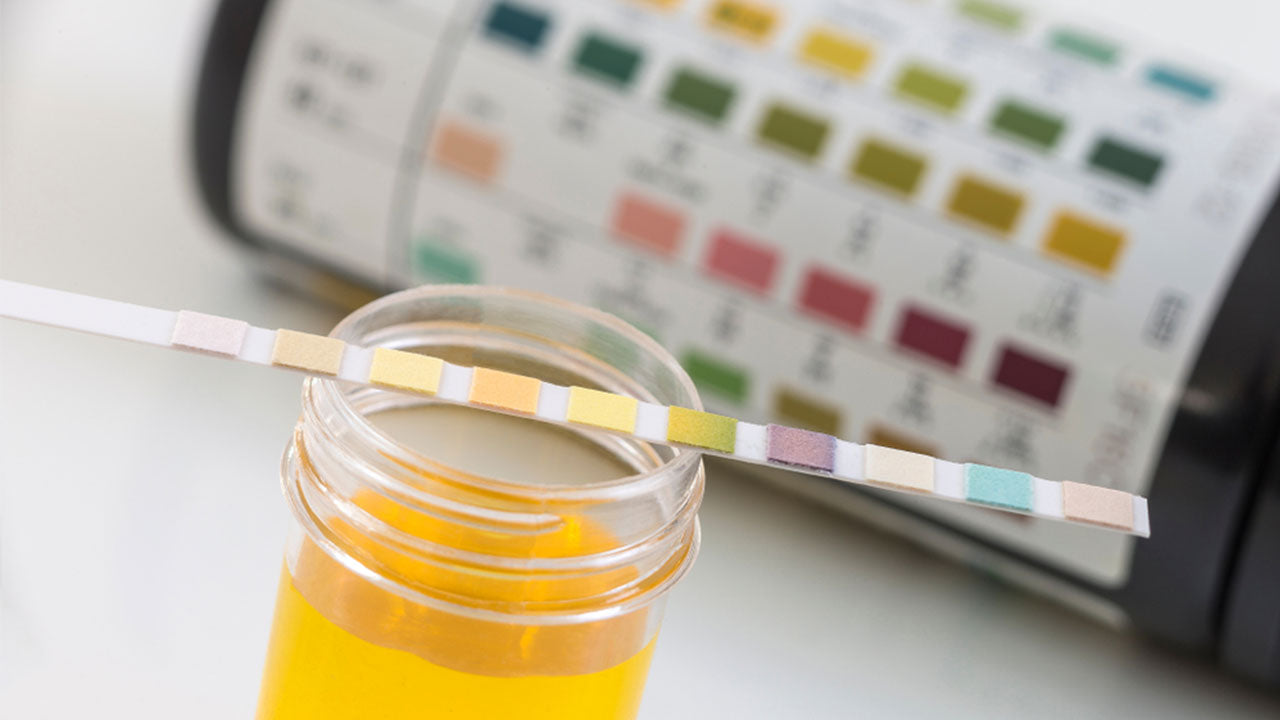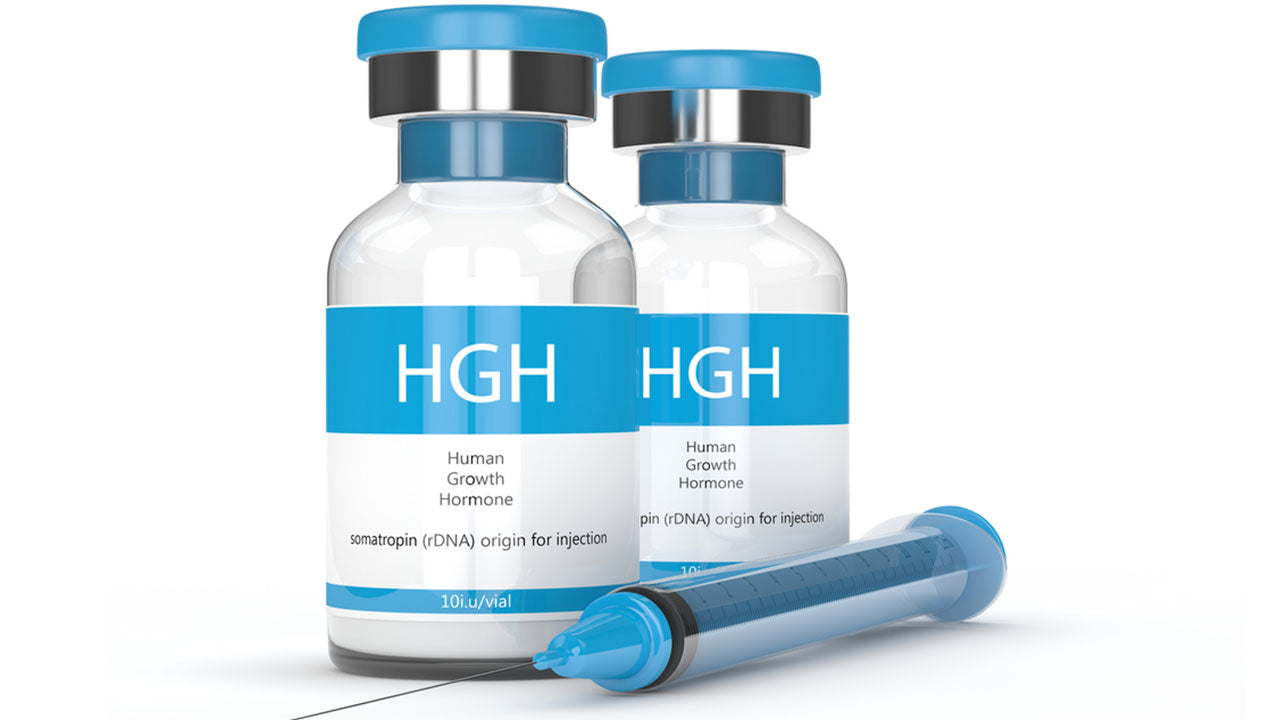Amino Acids: The Building Blocks of Protein Explained
 By: by Amino Science
By: by Amino Science

Amino acids are the building blocks of protein, and proteins are, in turn, the building blocks of our muscles, cartilage, bones, skin, and blood. Crucial to life, amino acids also synthesize hormones and neurotransmitters, and help protect us from infection and illness. We can’t live without them, so let’s spend some time understanding these biological heroes. We’ll review the importance of protein and amino acids, their structures, and all the different types, from essential amino acids to ketogenic amino acids and everything in between.
Why Is Protein King?
We’ll get into the structure of amino acids in detail later on, but to understand the role they play as the building blocks of protein it’s helpful to understand how they form proteins.
Scientists have identified approximately 500 naturally occurring amino acids, of which only 20 are used to make proteins in the human body, earning them the sobriquet proteinogenic amino acids.
These 20 amino acids link together in varying combinations to form different types of protein. That’s the simple how of it that will suffice for the moment.
Proteins make up every cell in our bodies, but just as proteins are made up of a different mix of amino acids, they also perform different functions.
Some proteins give structure to our hair, skin, nails, cartilage, and tissues. Others are used to make enzymes that catalyze the biochemical reactions in our bodies. Still others form hormones that transmit information between cells, organs, and tissues, while many play a part in the growth and maintenance of muscle.
Proteins help normalize fluid balance and pH levels, and even strengthen immune health by forming antibodies, or immunoglobulins, that defend against bacteria and viruses.
And amino acids are the key to it all.

Macronutrient Minimums
Protein is a macronutrient like fat and carbohydrates, but unlike fat and carbs, protein cannot be stored in the body. It’s converted into glucose or triglycerides and used to fuel energy or build up your energy reserves. Any excess is excreted by the kidneys as urea. While you don’t want to consume too much protein, as doing so can overtax your kidneys, agitate the body’s pH levels, and increase calcium excretion which can lead to osteoporosis, you also must be sure to eat enough protein to satisfy your body’s needs.
Experts hold that 0.8 grams of protein per 2 pounds of body weight meets the minimum protein requirements, but bodybuilders, athletes, older adults, and the infirmed have much higher protein needs, and can benefit from supplemental support.
Before we cover the best way to meet your protein needs, let’s figure out which amino acids are most important to your diet.
Building Blocks of Protein Basics
The 20 proteinogenic amino acids in the standard genetic code are divided into three main categories that you may already be familiar with: essential amino acids, nonessential amino acids, and conditionally essential amino acids.
Essential Amino Acids
The essential amino acids can’t be produced in the body and you must get them from your diet and/or as part of a targeted supplement.
The nine essential amino acids are:
- Histidine
- Isoleucine
- Leucine
- Lysine
- Methionine
- Phenylalanine
- Threonine
- Tryptophan
- Valine
The essential amino acids all play a role in protein synthesis, but let’s get to know their specific functions a little better.
- Histidine: Along with producing histamine, histidine is involved in tissue repair and protection, regulates pH balance, helps synthesize the protein in red blood cells, and helps maintain the myelin sheaths that protect nerve cells.
- Isoleucine: A branched-chain amino acid (BCAA), so-called because branched-chain amino acids have branched side chains (more on side chains later), isoleucine makes up hemoglobin, assists in blood clotting and wound healing, regulates blood sugar and energy levels, and helps the muscles recover from strenuous exercise.
- Leucine: Also a BCAA, leucine owns the most stock in muscle tissue, where it helps jumpstart protein synthesis. Leucine also accelerates muscle recovery and energy production by increasing the number of muscle mitochondria. Other responsibilities include building and repairing bone tissue, encouraging wound healing, and boosting growth hormone and insulin levels.
- Lysine: This immune-boosting essential amino acid helps regulate calcium absorption, build collagen, maintain artery walls, reduce inflammation, and even improve mood.
- Methionine: Without methionine, protein synthesis can’t begin. This sulfuric amino acid promotes the formation of cartilage, strengthens joints, improves nutrient absorption, and has antioxidant, anti-inflammatory, analgesic, and detoxification properties.
- Phenylalanine: In addition to being a component of many proteins and enzymes, phenylalanine is a precursor to the amino acid tyrosine and affects mood, focus, and brain function.
- Threonine: A precursor of the amino acids serine and glycine, threonine keeps bones and teeth strong, aids in wound healing, defends against fatty liver buildup, promotes gut health, and supports the immune, central nervous, and cardiovascular systems.
- Tryptophan: A precursor of niacin and serotonin, tryptophan promotes normal growth in infants and helps regulate muscle protein turnover, which is the balance between muscle protein breakdown and muscle protein synthesis. Tryptophan also helps protect against digestive disorders such as irritable bowel syndrome.
- Valine: The third BCAA plays an important role in tissue repair, blood sugar control, and muscle metabolism. Valine also promotes brain function and a healthy central nervous system, as well as keeping levels of nitrogen in the body stable.
Nonessential Amino Acids
These amino acids are just as important to health as the essential amino acids, but your body can produce them, so they aren’t an essential component of your diet. They are:
- Alanine
- Arginine
- Asparagine
- Aspartic Acid
- Cysteine
- Glutamic Acid
- Glutamine
- Glycine
- Proline
- Serine
- Tyrosine
Each has a unique set of responsibilities in the body.
- Alanine: Tiny but mighty, alanine clears away toxic byproducts of muscle protein breakdown, regulates blood sugar and cholesterol levels, provides energy to muscles and the central nervous system, and produces lymphocytes, a type of white blood cell.
- Arginine: A precursor of nitric oxide, arginine relaxes blood vessels, thereby helping to lower blood pressure, correct erectile dysfunction, promote wound healing, detoxify the kidneys, balance hormones, and bolster the immune system.
- Asparagine: This amino acid gives its attention to the central nervous system, where it promotes the development of neurons. Asparagine makes up structural proteins called glycoproteins that build connective tissues and support digestion.
- Aspartic acid: Acting as a neurotransmitter, aspartic acid helps synthesize four essential amino acids (methionine, threonine, isoleucine, and lysine) and makes up enzymes that produce metabolic reactions in the body.
- Cysteine: Like methionine, cysteine is a sulfuric acid, but it is also rich in the structural protein beta-keratin that makes up skin, nails, and hair and boosts collagen production. Cysteine also produces taurine, an antioxidant that supports skeletal muscle and heart function, and glutathione, an antioxidant that eliminates free radicals throughout the body and helps to detoxify the liver.
- Glutamic acid: A true ally to the brain, glutamic acid, otherwise known as glutamate, provides energy to the brain, takes part in brain metabolism, regulates ammonia levels in the brain, and helps synthesize gamma-aminobutyric acid (GABA), which stimulates feelings of calm and relaxation.
- Glutamine: Like cysteine, glutamine helps produce the antioxidant glutathione, but it also optimizes digestion, immune system health, and cognitive function. The most abundant amino acid in the blood, glutamine transports nitrogen through the body and provides energy.
- Glycine: Known for its role in wound healing, glycine makes up a third of collagen. It also provides glucose for energy, helps cells grow and function, and supports a healthy digestive system. It acts as a neurotransmitter that processes sensory and motor information.
- Proline: The other third of amino acids in collagen is proline, making it a crucial component of tissue and skin regeneration and wound healing. Proline directs the artery walls to let go of fat that has accumulated in the blood, thereby protecting against blood clots, high blood pressure, and heart disease.
- Serine: This mood enhancer helps to keep depression, anxiety, confusion, and insomnia at bay by producing tryptophan, which in turn promotes the mood-stabilizing hormone serotonin. Serine also influences muscle growth, fat metabolism, and the immune system.
- Tyrosine: This nonessential plays a part in protein synthesis, the production of thyroid hormones and the neurotransmitters dopamine, norepinephrine, and epinephrine, which help keep stress and depression at bay.
Conditionally Essential Amino Acids
Also referred to as semi-essential amino acids, conditionally essential amino acids are the nonessential amino acids that become essential under conditions of stress, injury, or illness because the body has trouble producing them. In these instances, dietary support is required.
The 7 nonessential amino acids that can become semi-essential amino acids are:
- Arginine
- Cysteine
- Glutamine
- Glycine
- Proline
- Serine
- Tyrosine
Eating an Amino-Acid Rich Diet
So, what’s the best way to meet your protein needs? By eating a diet rich in amino acids, especially complete proteins that contain a sufficient amount of all nine of the essential amino acids.
Complete proteins include:
- Meat
- Poultry
- Fish
- Eggs
- Dairy
- Quinoa
- Buckwheat
- Ezekiel bread
- Hempseed
- Blue-green algae
- Soybeans
If, however, you are battling an illness or injury, your protein needs are unlikely to be met through diet alone. Likewise, if you are an older adult and thereby prone to age-related muscle decline, your body isn’t responding to the muscle-building cues of essential amino acids as readily, and you would benefit from additional support. And if you’re looking to build muscle, you’re definitely going to want to bolster your resistance training program with an essential amino acid supplement.
Low in calories and high in the nutrients needed to increase lean body mass, speed healing, and protect against infections, 15 grams of supplemental essential amino acids a day can shore up any nutritional gaps and make sure you’re feeding your body the amino acids it needs to recover quickly from stress and thrive.
Check out our patented essential amino acid blends, developed by the top minds in amino acid research and formulated to the precise ratio to help you treat your health needs or reach your performance goals.
Let’s Get Sciencey
We’ve gained a general understanding of the role the building blocks of protein play in your body, the specific functions of each, and the importance of supplying your body with the essentials. For all you science buffs and MCAT students out there, let’s go a little deeper into the chemistry of amino acids.
The Fundamental Structure of Amino Acids
Amino acid is the abbreviated version of α-amino (alpha-amino) carboxylic acid. The long version can help explain the fundamental structure of amino acids.
Almost every amino acid has a primary amino group (―NH2) and an acidic carboxyl group (―COOH) that are attached to each other by way of a central carbon (C) atom called the α-carbon (alpha-carbon).
The α-carbon atom is typically bonded with a hydrogen atom and the R group. The R group is the distinguishing feature of every amino acid and determines aspects such as size, polarity, and pH. The R group is what makes the amino acid unique.
There are some outliers. Proline’s R group, for instance, is bonded to both its central carbon atom and its amino group, and glycine’s single hydrogen side chain in place of an R group makes it a structural standout, but we can pretty much count on this fundamental structure when analyzing amino acids.
Check out the visual below to see how these bonds form amino acids.

Amino acids link together through peptide bonds, a type of covalent bond that forms in reaction to the amino group of one amino acid coming into contact with the carboxylic group of another amino acid. These peptide bonds form a polypeptide chain and represent the primary structure, which is the simplest level of protein structure.
Secondary structure is determined by the interactions between the amino acids’ hydrogen bonds and the formation of beta barrels and alpha helixes.
Tertiary structure accounts for an overall folding of the entire polypeptide chain and the interactions between the secondary structures to form a specific 3D shape.
Many proteins stop there, but others such as hemoglobin will go on to a quaternary structure made up of multiple polypeptide chains.
Amino Acid Classifications
The amino acids can be separated into many different types based on their polarity, pH level, side chain type, and the locations of their core structural functional groups.
Let’s talk first about functional groups, which are the R groups that determine the exact chemistry of each protein. Of the 20 standard amino acids 6 have hydrocarbon R groups, 7 have neutral groups, and 6 have acid or base R groups. And then there’s glycine, with its single hydrogen atom.
From there, amino acids can be classified according to their pH. For instance, glutamic acid and aspartic acid are acidic with a low pH, while arginine, histidine, and lysine are basic with a high pH.
Polarity refers to how the amino acid responds to water: does it repel water (nonpolar) or does it attract water (polar)?
Polar amino acids, which have atoms from different elements, tend to have hydrophilic side chains, meaning they like water. These amino acids include:
- Serine
- Threonine
- Cysteine
- Tyrosine
- Asparagine
- Glutamine
They have at the ready at least one nitrogen, oxygen, or sulfur atom waiting to pair with water.
Nonpolar amino acids, which have atoms from the same elements, tend to be hydrophobic and resist water. These amino acids include:
- Glycine
- Alanine
- Valine
- Leucine
- Isoleucine
- Methionine
- Tryptophan
- Phenylalanine
- Proline
Type of Amino Acids
We’ve already discussed different types of amino acids, such as essential amino acids, the subgroup BCAAs, and sulfuric acids like methionine and cysteine. Other categories of interest include glucogenic amino acids, ketogenic amino acids, and aromatic amino acids.
Glucogenic Amino Acids
The glucogenic amino acids are distinct in that they convert to glucose through gluconeogenesis. During gluconeogenesis, amino acids in the liver are changed into alpha keto acids and then into glucose. These are:
- Alanine
- Arginine
- Asparagine
- Aspartic acid
- Cysteine
- Glutamic acid
- Glutamine
- Glycine
- Histidine
- Methionine
- Proline
- Serine
- Valine
Ketogenic Amino Acids
Instead of being converted into glucogenic amino acids, these amino acids become ketone bodies. Leucine and lysine are the true ketogenic amino acids, but there are five others that can be both ketogenic and glucogenic according to need.
- Phenylalanine
- Isoleucine
- Threonine (not every amino acid expert agrees)
- Tryptophan
- Tyrosine
Ketone bodies are an alternative source of energy for the brain and are the coveted byproduct of low-carb diets, which means there may be some benefit of increasing your intake of ketogenic amino acids.
Aromatic Amino Acids
There are just three aromatic amino acids―phenylalanine, tyrosine, and tryptophan. They feature a characteristic aromatic ring with three double bonds on their side chains and can absorb ultraviolet light.
Give Me More
If you’re curious about the chemistry, then check out our more comprehensive articles on:
- Aromatic amino acids
- Ketogenic amino acids
- Acidic and basic amino acids
- How to memorize amino acids
- Amino acid functional groups
- Hydrophilic amino acids
- Nonpolar amino acids
- Polar amino acids
And if you’d like to start optimizing your health with amino acids, then the first step is to learn more about our patented amino acids blends formulated from decades of research.
LIFE is a patented blend of essential amino acids that works to prevent the age-related decline of muscle and heart function and improve quality of life and longevity so you can stay healthy and active as you age.
Learn more here.
PERFORM is a patent-pending blend of essential amino acids plus creatine and caffeine that is clinically proven to supercharge strength, blood flow, focus, and endurance for improved energy, concentration and performance.
Learn more here.
HEAL is a patent-pending recovery blend of essential amino acids, whey protein, and creatine that promotes faster healing after surgery or injury, as well as improved physical function and health outcomes.
Learn more here.

Up to 25% off Amino
Shop NowTAGS: knowledge
Join the Community
Comments (0)
Most Craveable Recipes




 833-264-6620
833-264-6620



















